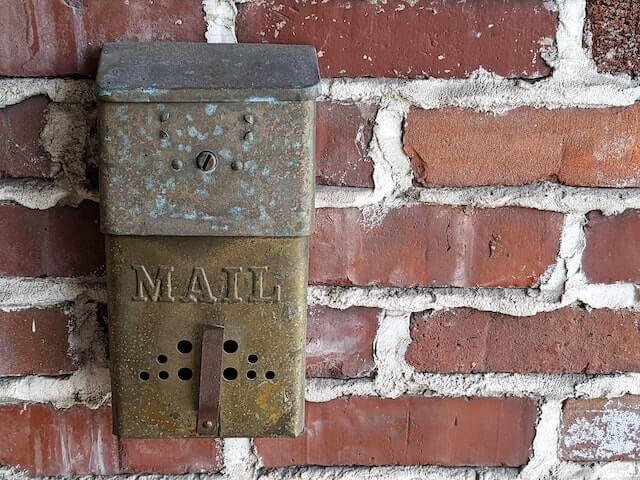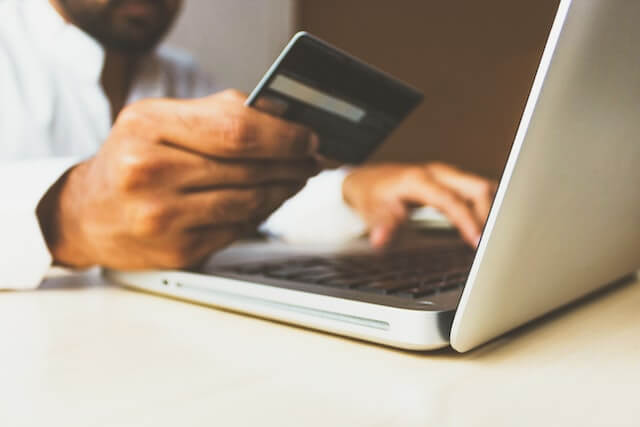Is direct mail dead? It’s the question on marketers’ minds. At the very least, it’s the question they’re Googling: with 167 million results for the search “is direct mail dead?”
So, is it? Let’s just say you shouldn’t wait around for the funeral procession. In 2018 alone, Canada Post delivered nearly 8 billion pieces of mail and parcels—almost 32 million items delivered daily. Direct mail isn’t going anywhere. Its place in the wider toolset of marketing and sales channels may be changing. But its power to build your business isn’t. Here are six reasons why.
1. Direct mail delights
Those of us old enough to remember when we went to Blockbuster Video for our Friday night entertainment will recall when mail was annoying—the inbox spam of the ’90s. And like the movie rental chain, those days are long gone. 41{c5c42d2e0b68f182649ca85478c9eaed180e8fe94e932f32b8af828d359c4a57} of Americans look forward to checking their mail every day, including 36{c5c42d2e0b68f182649ca85478c9eaed180e8fe94e932f32b8af828d359c4a57} of Americans under the age of 30. In turn, a whopping 90{c5c42d2e0b68f182649ca85478c9eaed180e8fe94e932f32b8af828d359c4a57} of Americans look forward to receiving personal letters and cards… something we know a little bit about.
An enormous number of your potential customers, donors, and stakeholders like mail. They really like it.
2. Direct mail sticks around.
Today’s email inboxes are a blast zone of unopened brand newsletters, sales emails, and spam from that one store you visited on vacation once, and foolishly gave your email address for a digital receipt instead of a printed one. Big mistake trying to save the trees there.
Avoid the digital wasteland that is your customers’ spam folder. Direct mail, in contrast, sticks around. Over an 18-month research study, the UK’s Royal Mail service found that:
- nearly 40{c5c42d2e0b68f182649ca85478c9eaed180e8fe94e932f32b8af828d359c4a57} of consumers have a dedicated display area for mail;
- that nearly one-quarter of mail is shared among members of a household; and
- mail remains in the home for anywhere between 17 and 45 days after delivery, leaving multiple opportunities for your message to be seen and re-seen.
A strong direct mail piece – potentially displayed publicly – will catch the eye of multiple occupants in one home and will stick around far longer—unlike an email, always buried by the next email to arrive. This boosts message recall, enhances brand recognition, and means more bang for your marketing buck.
3. Direct mail gets responses.
Sure, email marketing can be cheap—but sometimes, you get what you pay for. Canada Post found that postcard marketing has a response rate of 4.4{c5c42d2e0b68f182649ca85478c9eaed180e8fe94e932f32b8af828d359c4a57}, compared to digital marketing at 0.12{c5c42d2e0b68f182649ca85478c9eaed180e8fe94e932f32b8af828d359c4a57}. That means postcard marketing is 10-30 times more effective.
But why cause a lover’s spat when you can be a matchmaker? Ultimately, email marketing and direct mail are better off together. Canada Post conducted neuromarketing research and concluded that recipients “paid 39{c5c42d2e0b68f182649ca85478c9eaed180e8fe94e932f32b8af828d359c4a57} more attention to integrated direct mail and digital campaigns than to single-media digital campaigns, and consumers had 40{c5c42d2e0b68f182649ca85478c9eaed180e8fe94e932f32b8af828d359c4a57} higher brand recall when direct mail followed email.”
4. Direct mail drives customers to your website.
Let’s go a little deeper into the power of integration. Today’s consumers seamlessly move from offline experiences to online ones. We can catch an ad on a subway car, whip out our phones, and search more about what’s caught our eye.
The United States Postal Service commissioned a study into how direct mail directs traffic to senders’ websites. The results will make you smile. Direct mail and catalog recipients were not only more likely to make an online purchase—they were also more likely to buy more items and spend more money. Catalogues were particularly impactful. The study found a revenue lift of 163{c5c42d2e0b68f182649ca85478c9eaed180e8fe94e932f32b8af828d359c4a57} for websites supported by catalogues, as opposed to those that were not—boosted especially by a greater influence on first-time shoppers, and a discouraging effect on competition shopping.
Direct mail, in this way, can serve as a strong cue for driving a consumer to your digital platforms—a particularly powerful insight for an e-commerce retailer, or other company dependent on-site traffic.
Given this extraordinary website traffic-driving effect, consider one of direct mail’s greatest benefits for retailers…
5. Direct mail can help you control sales fluctuations.
It’s a problem facing many retailers—peaks and troughs over the course of the annual sales cycle. Some are plagued by these fluctuations more than others. For instance, in 2017 many famous American retailers—like GameStop, Best Buy, Kohl’s, and Macy’s—depended on the holiday season alone for more than one-third of their annual revenue. That’s a nail-biting dependency for any business owner, where a bad season can mean downsizing, layoffs, or worse.
Direct mail’s ability to drive consumers to online stores can be strategically leveraged to even out your sales across the year. Consider identifying the period of the year where your sales performance is worst and deploying a direct mail campaign to boost revenue through special discount events and other tactics.
6. Direct mail is emotional.
Put simply: direct mail stimulates all the emotions that can create a lasting, loyal relationship between you and your customers.
That Royal Mail study we mentioned earlier found that more than half of recipients feel more valued after receiving mail, and value something they can touch 24{c5c42d2e0b68f182649ca85478c9eaed180e8fe94e932f32b8af828d359c4a57} more than something they simply see.
We’re no strangers to the emotional punch of handwritten, direct mail here at Postalgia. We’ve written about how direct mail can turn an e-commerce transaction into a real-life relationship, and have also taken a deep dive into the ways expressing gratitude to customers or donors through direct mail can build lasting, loyal, long-term connections with key market demographics. Creating a genuine emotional connection with your brand is a time-tested way to build a business that lasts.
These are only six examples of how direct mail packs a powerful punch for any organization, whether you depend on new leads, donors, customers, or lasting loyalty. And no direct mail is more impactful than handwritten letters produced at scale—an incomparable personal touch for thousands of your stakeholders. Click here to learn how.
Want to level up your direct mail? Contact us.





